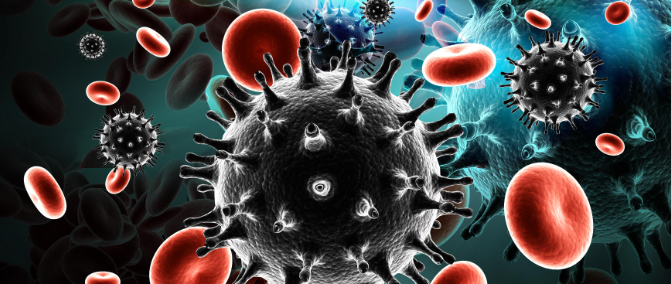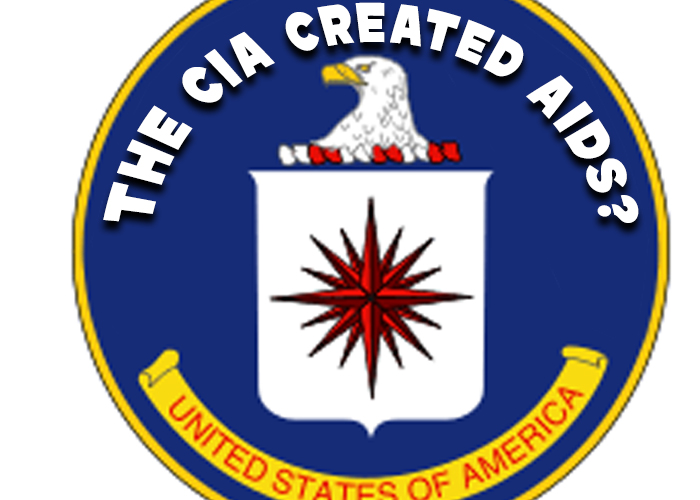The theory that the CIA created and intentionally spread HIV/AIDS to control certain populations is one of the most controversial and widely debated conspiracy theories in modern history. This theory suggests that the U.S. government, through the Central Intelligence Agency (CIA), engineered the Human Immunodeficiency Virus (HIV) to target specific groups, particularly African communities and the LGBTQ+ population. While this theory has been repeatedly debunked by scientists and historians, it continues to persist, fueled by mistrust of government institutions and historical examples of unethical medical experiments. In this article, we will explore the origins of this conspiracy theory, the evidence (or lack thereof) supporting it, and the real history of HIV/AIDS. We will also discuss why such theories gain traction and how they impact public health efforts. To make it easy to understand, we will use simple language and include summaries, timelines, and questions and answers.
What is HIV/AIDS?

HIV (Human Immunodeficiency Virus) is a virus that attacks the immune system, specifically the CD4 cells (T cells), which help the body fight infections. If left untreated, HIV can lead to AIDS (Acquired Immunodeficiency Syndrome), a condition where the immune system is severely damaged, making the body vulnerable to life-threatening infections and cancers.
HIV is believed to have originated in non-human primates in Central Africa and was transmitted to humans in the early 20th century. The virus spread globally, and by the 1980s, it had become a major public health crisis. Today, HIV/AIDS affects millions of people worldwide, but advancements in treatment have made it a manageable condition for many.
The Origins of the Conspiracy Theory
The theory that the CIA created HIV/AIDS emerged in the 1980s, during the early years of the epidemic. At the time, little was known about the virus, and fear and misinformation were widespread. Several factors contributed to the rise of this conspiracy theory:

- Historical Mistrust: Many people, particularly in African and LGBTQ+ communities, distrusted government institutions due to historical injustices, such as the Tuskegee Syphilis Experiment, where African American men were deliberately left untreated for syphilis by the U.S. government.
- Lack of Information: In the early 1980s, scientists and doctors were still trying to understand HIV/AIDS. The lack of clear information created a vacuum that conspiracy theories could fill.
- Targeted Communities: HIV/AIDS disproportionately affected marginalized groups, including gay men, intravenous drug users, and people in sub-Saharan Africa. This led some to believe that the virus was intentionally created to target these populations.
Key Claims of the Conspiracy Theory
The conspiracy theory that the CIA created HIV/AIDS includes several key claims:
- The Virus Was Engineered in a Lab: Some theorists claim that HIV was created in a laboratory as a biological weapon and then intentionally released.
- Targeting Specific Populations: The theory suggests that HIV was designed to target African communities and the LGBTQ+ population as a form of population control or genocide.
- Vaccination Programs as a Cover: Some believe that vaccination programs in Africa were used as a cover to spread the virus.
- Government Cover-Up: Theorists argue that the U.S. government has covered up its role in creating and spreading HIV/AIDS.
Debunking the Conspiracy Theory
While the conspiracy theory has gained traction in some circles, it has been thoroughly debunked by scientists, historians, and public health experts. Here are the key reasons why the theory is not credible:
- Scientific Evidence: Extensive research has shown that HIV originated in non-human primates and was transmitted to humans through natural processes, such as hunting and butchering bushmeat. The virus has been traced back to the early 20th century, long before the CIA existed.
- Lack of Motive: There is no credible evidence to suggest that the U.S. government or the CIA had any reason to create and spread HIV/AIDS. The idea that they would target specific populations is not supported by historical or political context.
- Vaccination Programs: Vaccination programs in Africa have been thoroughly studied and have not been linked to the spread of HIV. In fact, these programs have saved millions of lives.
- Global Impact: HIV/AIDS has affected people of all races, genders, and sexual orientations worldwide. The idea that it was designed to target specific groups does not align with the global nature of the epidemic.
The Real History of HIV/AIDS
The true history of HIV/AIDS is a story of scientific discovery, public health challenges, and social stigma. Here are some key milestones:
- Early 20th Century: HIV is believed to have crossed from chimpanzees to humans in Central Africa.
- 1981: The first cases of AIDS are reported in the United States among gay men.
- 1983: Scientists identify HIV as the cause of AIDS.
- 1987: The first antiretroviral drug, AZT, is approved for treating HIV.
- 1996: Highly Active Antiretroviral Therapy (HAART) is introduced, transforming HIV/AIDS from a death sentence into a manageable condition.
- 2000s-Present: Global efforts to combat HIV/AIDS, including prevention programs, education, and access to treatment, have significantly reduced the spread of the virus.
Why Do Conspiracy Theories Persist?
Conspiracy theories like the one about the CIA creating HIV/AIDS persist for several reasons:
- Mistrust of Authorities: Historical injustices, such as the Tuskegee Syphilis Experiment, have led to deep mistrust of government and medical institutions, particularly among marginalized communities.
- Fear and Uncertainty: The early years of the HIV/AIDS epidemic were marked by fear and uncertainty. Conspiracy theories can provide a sense of explanation and control in the face of the unknown.
- Confirmation Bias: People are more likely to believe information that aligns with their existing beliefs or suspicions.
- Spread of Misinformation: The internet and social media have made it easier for conspiracy theories to spread rapidly and reach a wide audience.
The Impact of Conspiracy Theories on Public Health
Conspiracy theories about HIV/AIDS can have serious consequences for public health. They can lead to:
- Stigma and Discrimination: Beliefs that HIV/AIDS was created to target specific groups can reinforce stigma and discrimination against those communities.
- Distrust of Medical Institutions: Conspiracy theories can erode trust in healthcare providers and public health initiatives, making it harder to combat the epidemic.
- Hesitancy to Seek Treatment: People who believe in conspiracy theories may be less likely to seek testing, treatment, or prevention services.
Timeline of Key Events in HIV/AIDS History
- Early 1900s: HIV crosses from chimpanzees to humans in Central Africa.
- 1981: First cases of AIDS reported in the U.S.
- 1983: HIV identified as the cause of AIDS.
- 1987: AZT, the first antiretroviral drug, is approved.
- 1996: HAART is introduced, revolutionizing HIV treatment.
- 2000s-Present: Global efforts reduce HIV/AIDS transmission and improve access to treatment.
Summaries
Summary of the Conspiracy Theory
- The theory claims that the CIA created and spread HIV/AIDS to control certain populations.
- It suggests that the virus was engineered in a lab and targeted African and LGBTQ+ communities.
Summary of Debunking the Theory
- Scientific evidence shows HIV originated naturally in non-human primates.
- There is no credible evidence to support the claim that the CIA created HIV/AIDS.
Summary of the Real History of HIV/AIDS
- HIV crossed from chimpanzees to humans in the early 20th century.
- The virus spread globally, leading to a public health crisis in the 1980s.
- Advances in treatment have made HIV/AIDS a manageable condition.
Summary of Why Conspiracy Theories Persist
- Mistrust of authorities, fear, and misinformation contribute to the persistence of conspiracy theories.
Questions and Answers
Q: Did the CIA create HIV/AIDS?
A: No. Scientific evidence shows that HIV originated naturally and was not created in a lab.
Q: Why do some people believe this theory?
A: Mistrust of government institutions, fear, and misinformation contribute to the belief in this theory.
Q: How has HIV/AIDS been treated over the years?
A: Advances in antiretroviral therapy have transformed HIV/AIDS from a fatal disease to a manageable condition.
Q: What impact do conspiracy theories have on public health?
A: They can lead to stigma, distrust of medical institutions, and hesitancy to seek treatment.
Conclusion
The conspiracy theory that the CIA created HIV/AIDS is a powerful example of how fear, mistrust, and misinformation can shape public perception. While the theory has been thoroughly debunked, it continues to persist, highlighting the need for transparency, education, and trust-building in public health efforts. The real history of HIV/AIDS is a story of scientific progress and global collaboration, but it is also a reminder of the social and political challenges that accompany public health crises. By understanding the facts and addressing the root causes of conspiracy theories, we can work toward a more informed and compassionate world.

